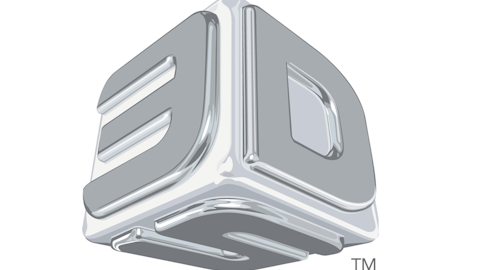What if we’ve (mostly) got it all wrong about 3-D printing?
Last year’s hottest trend was the growth of consumer-targeted 3-D printers. With a growing roster of companies — Solidoodle, MakerBot, Portabee, Formlabs, RepRap, and 3D Systems Corporation (NYSE:DDD) are just a sample of the more well-known companies with consumer offerings — competing in a barely tapped market (only 23,000 consumer 3-D printers were sold in 2011), the proverbial sky should be the limit. If even a fraction of today’s smartphone buyers decide that printing protective cases and custom earbuds is worth the price of an entry-level 3-D printer, then the industry could take off like the computer industry did in the 1980s.

Source: Wikipedia.
But what if this is the wrong assumption? Last week’s 3-D printing industry projections from Gartner focus instead on the cost of business-class machines, which Gartner claims will cost less than $2,000 in just three years:
3-D printers are now priced so that any size business can invest in them and start experimenting with the myriad ways to monetize them. By 2016, enterprise-class 3-D printers will be available for under $2,000. Early adopters can experiment with 3-D printers with minimal risk of capital or time, possibly gaining an advantage in product design and time to market over their competition, as well as understanding the realistic material costs and time to build parts. Furthermore, enterprise uses for 3-D printers have expanded as capabilities of 3-D scanners and design tools have advanced, and as the commercial and open-source development of additional design software tools has made 3-D printing more practical. Gartner believes that the commercial market for 3-D print applications will continue expanding into architectural, engineering, geospatial and medical uses, as well as short-run manufacturing.
Why manufacturing won’t die (yet)
To some investors, the spread of consumer 3-D printers is the logical next step in a new industrial revolution of similar or greater scope to that begun by steam engines three centuries ago. When everyone has a 3-D printer, there will be no real need for a sprawling global manufacturing infrastructure — everything will come from the magic box in your house, set to work at a moment’s notice on a new carburetor or cup-holder. This giddy oversimplification of two incredibly complex processes (good 3-D printing and the global manufacturing infrastructure) ignores a number of drawbacks to low-cost 3-D printing, several of which I’ve explored in great detail over the past year:
1). There’s no compelling need to print most things in the home.
2). A 3-D printer needs many materials to compete with manufacturing.
3). Most consumers lack the technical aptitude to use 3-D printers effectively.
4). Illicit uses could undermine regulatory support and sales momentum.
This is a starting point for rationales against broad popular 3-D printing adoption. However, it wasn’t until I found an article titled “The Achilles’ Heel of 3-D Printing” by Peter Friedman earlier this month that the picture really started to crystallize. His conclusions:
1). 3-D printing has a “complexity paradox.”
2). “Greater complexity = more + bigger voids = less ink = lower cost.”
3). With greater complexity comes slower operation.
4). The complexity paradox and the slowness problem are counter to the advantages of manufacturing: “simplicity, quantity, and speed.”
5). “Conventional manufacturing automation is all about making very large numbers of simple things extremely quickly (and accurately).”
6). Even the fastest 3-D printing process is likely to be several orders of magnitude slower than a comparable automated manufacturing process.
7). To compete with manufacturing, 3-D printing has to be much faster.
8). An environment that rewards 3-D printed manufacturing processes is likely to be one in which human beings consume fewer — but more customized — products.

